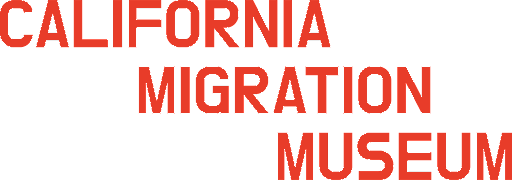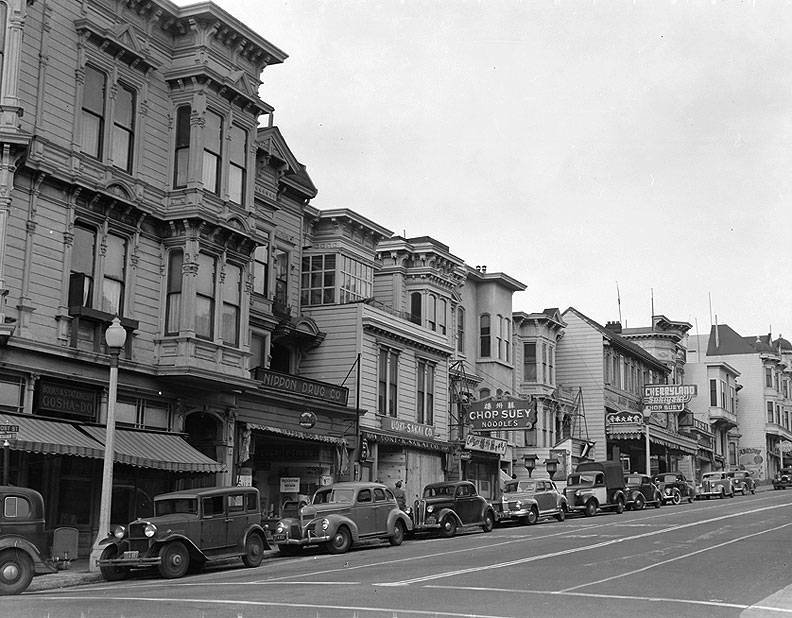Japanese Immigration Before World War II
Gannen Mono
Modern Japanese emigration began in 1868 with the Meiji Restoration. The beginning of a new period of imperial rule is seen as the dividing line between 'traditional' and 'modern' Japan. But modernization came at the expense of the agricultural sector. The Meiji government of Japan enacted a new land-tax system on farmers to finance industrialization. In the following decades, hundreds of thousands of farmers lost their land to the high taxes, inspiring them to seek other opportunities abroad. In June 1868, a group of about 150 Japanese migrant workers arrived in Honolulu, known as Gannen Mono, or “First Year of the Meiji Era People.”
Sugarcane, Pineapple and Flowers
For a period of nearly twenty years – from 1869 to 1885 – Japan barred emigration to the Kingdom of Hawaii, wary of the ethnic discrimination Japanese migrant workers had already experienced at the hands of American plantation owners. But in 1885, relations were mended, and, a ship called the City of Tokio brought over 900 Japanese immigrants to work as contract laborers on the island’s sugarcane and pineapple plantations. Many more Japanese came to Hawaii in the following years,becoming one of the Island Kingdom’s largest ethnic groups. These immigrants came mainly from southern Japan (prefectures like Hiroshima, Yamaguchi, and Kumamoto).
“Return to Harlem” protagonist Daisy Satoda’s father, Mitsuzo Uyeda, arrived in Hawaii from Kumamoto in 1899. Daisy’s mother, Matsuye Moriyama, was born in Hawaii, and among the first of the Japanese immigrants to gain American birthright citizenship when Hawaii became a U.S. territory in 1898.
Given the backbreaking work required to weed and cut sugarcane, many people of Japanese descent eventually sought employment as farmers and fishermen on the U.S. mainland, moving to states like California, Oregon, and Washington. Japanese immigrants established vineyards, farms, and orchards throughout agricultural areas in central California. San Francisco, as the chief port of entry for Asian immigration, soon had the largest Japanese immigrant population of any mainland American city.
Japanese women laboring in Hawaiian sugarcane fields, 1918
Courtesy of Bishop Museum
Japanese American farmers in California Credit: Dorothea Lange, NARA
Japanese immigrants became highly influential figures in California’s flower industry, The Domoto brothers, who had arrived in San Francisco in the 1880s from Wakayama, had founded a business growing flowers in nurseries, becoming the first to commercially produce camellias, wisterias, azaleas, and lilies. The Domotos played a leading role in founding The California Flower Market, Inc. in 1912, with 54 Japanese American growers in the San Francisco Bay Area as shareholders. This organization is still part of the iconic San Francisco Flower Mart.
Motonoshin Domoto in a greenhouse on 55th Avenue in Oakland in 1905.
Courtesy of the California Historical Society
A “Gentlemen’s Agreement”
Immigrants of Asian descent experienced discrimination almost as soon as they stepped foot on California soil, much of it born from white-led organized labor. In 1882 Congress had passed a law excluding Chinese laborers from entering the country (link to Look Up). Though Japanese migrants were not excluded by these federal laws, general anti-Asian sentiment continued to grow.
By 1900, there were nearly 2,000 Japanese living in San Francisco,– a combination of Issei (first generation) and Nisei (their U.S. born children, who were also American citizens) – living in San Francisco. Anti-Japanese sentiment in San Francisco grew along with the population increase, and, in 1906, the San Francisco Board of Education passed a regulation whereby children of Japanese descent would be required to attend separate, segregated schools.
Tokyo vehemently denounced the school segregation as an insult to Japanese pride and honor. To diffuse a potential diplomatic crisis, President Teddy Roosevelt met with San Francisco school officials and California legislative leaders. A compromise was reached. Japanese students were reinstated – on the condition that the Japanese government stop issuing passports to laborers bound for the continental US (an exception was made for the Japanese wives of current American residents, which allowed arranged “picture brides” to arrive legally). The 1907 pact was referred to as a “Gentlemen’s Agreement” as it was based solely on correspondence between the two governments and required no congressional ratification.
Picture brides from Japan being processed after arriving at Angel Island, California, c. 1910. They had been paired with men in the U.S. using only photographs and family recommendations. Courtesy of California State Parks
The marriage loophole led to a steady increase in the Japanese American population over the next decade-and-a-half as the gender imbalance evened out. In 1910, the ratio of Japanese men to women had been 7 to 1, but by 1920, there were fewer than 2 Japanese men for every Japanese woman in the US. 1.
Nihonmachi: “Japan People’s Town”
While early Japanese immigrants to San Francisco had settled in areas close to the port, like South Park and Chinatown (Chinese neighborhoods across the West Coast were often the only places that permitted Japanese immigrants to live and set up businesses), Nihonmachi (“Japan People’s Town”) emerged in the heart of the Western Addition through force majeure.
After the great earthquake of 1906 left the eastern half of San Francisco in ruins, displaced working-class families poured into the Western Additions' stately victorians from the ashes of downtown and South of Market. Over the next few decades, this became one of the most diverse neighborhoods in the country (San Francisco’s “Little United Nations”). The Western Addition was home to vibrant communities of Filipinos, Mexican Americans, and Jews. At this time, fewer than 1% of the city's population was Black American – but those few lived in the Western Addition. Slowly, the area east of Fillmore street became Nihonmachi: a mixture of older, first-generation (Issei) Japanese immigrants, most of whom were not U.S. citizens, and their second-generation (Nisei) children, almost all of whom were citizens.
There was still a real desire to push Asian families out of the city altogether. Landlords in the neighborhood were heavily criticized for being willing to rent their apartments to the Japanese. In 1907, the Chronicle ran a scare piece about the Japanese “invasion” of the Western Addition titled “A Greater San Francisco or a Lesser Nagasaki–Which?”
Yet, for the next three decades, Nihonmachi thrived. On the eve of war, the neighborhood was a bustling enclave. More than 5,000 Japanese and Japanese Americans lived in the neighborhood. There were 40 churches, 17 schools and kindergartens, a department store, and more than 200 Japanese-owned businesses.
San Francisco’s Japantowns, 1880-present. Courtesy Ben Pease
View north on Fillmore Street across Fulton Street, December 19, 1936. Horace Chaffee photograph, San Francisco Department of Public Works
1690 Post Street (Nippon Drugs)
The majestic Queen Anne Victorian which once stood at 1690 Post Street is a building where the fates of two Western Addition communities featured in “Return to Harlem” – Japanese and Black Americans – would become deeply entwined. Built around 1895, the single-family home near the corner of Post and Buchanan streets was divided into apartments after the quake. Nippon Drug Company later opened on its ground floor in the 1930s, co-owned by Japanese American Hatsuto Yamada. Hatsuto’s business prospered - until Japanese planes bombed Pearl Harbor on December 7, 1941. He was soon after incarcerated at Topaz Internment Camp. Nippon Drugs was left empty.
Nippon Drugs, 1942. Credit: Dorothea Lange, NARA
Want to Learn More?
The California Flower Market - California Historical Society Online Exhibition
Cool Gray City of Love, by Gary Kamiya
Generations: A Japanese American Community Portrait








